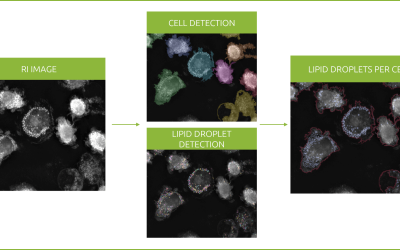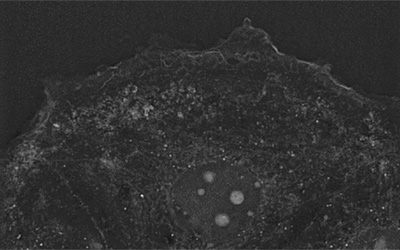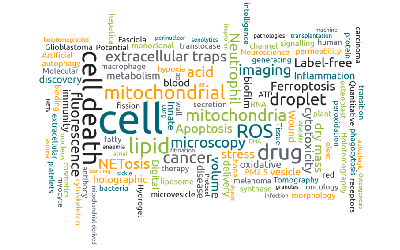Lung cancer: the world’s deadliest cancer
The World Health Organization (WHO) reports lung cancer as the most common cause of cancer death in 2020. It is estimated to have caused 1.8 million deaths worldwide, 85% of which, were classified as non‐small cell lung cancers (NSCLC). Only 19% of patients diagnosed with NSCLC survive for longer than 5 years. This worryingly low figure reflects the difficulties in diagnosing early stages of lung cancer (~40% of NSCLC diagnoses made are already at stage 4 (1)), and the high risk of metastasis (which reduces the 5-year survival rate to ~7% (2)).
What is metastasis and how does it occur?
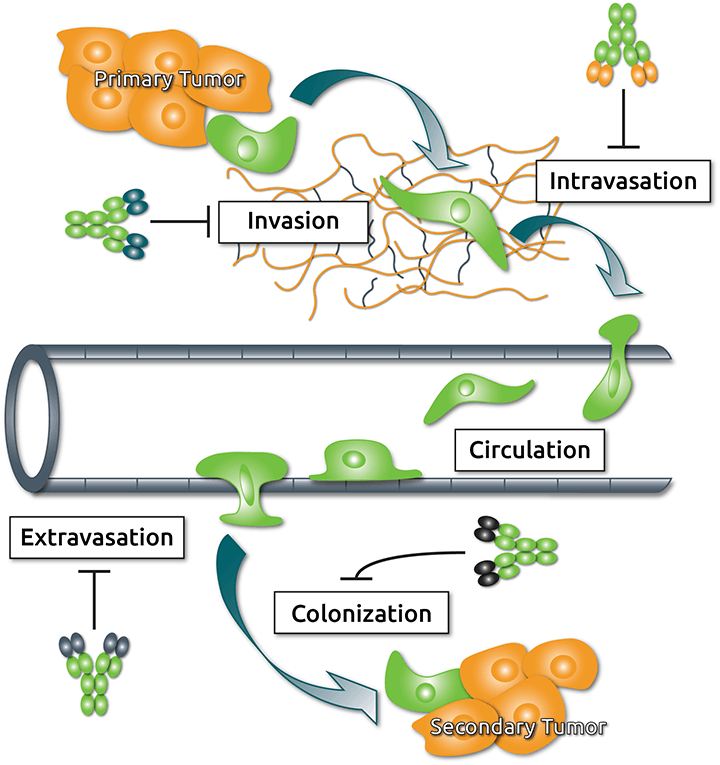
Fig.1.
The main steps involved in metastasis: invasion, intravasation, circulation, extravasation, and colonization. Figure adapted from (5).
Metastasis describes the spread of cancer from the primary site of an infection to a secondary site in the host’s body. It begins with the process of epithelial-mesenchymal transition (EMT); whereby polarized epithelial cells are converted into non-polarized mesenchymal cells, allowing them to acquire invasive and motile properties. The EMT kickstarts a complicated cascade that can be broadly separated into three main processes: invasion, intravasation and extravasation (3). All three steps involve important changes in cell-cell and cell-matrix adhesion.
During invasion, cells must lose adhesion to dissociate from the primary tumor mass and invade the surrounding stroma. Upon entry into the circulatory system cells re-attach to form circulating tumor cell (CTC) clusters (4). When the cluster arrives at an opportune area it must disperse to allow individual cells to re-adhere to endothelial cells to penetrate the endothelium and the basement membrane before it can proliferate at this secondary focus (3).
How can Nanolive imaging contribute to metastasis research?
Despite the importance of cell-cell and cell-matrix adhesion in metastasis, little is known about the spatiotemporal dynamics of these processes. This is largely because most current live cell imaging techniques use fluorescence, which imposes significant constraints on imaging frequency, temporal duration, and cell health (due to phototoxicity and bleaching). Nanolive imaging is label-free, alleviating all these limitations, and enabling researchers to follow changes in cell behaviour, morphology, and adhesion dynamics for extended periods of time.
Visualizing the process of adhesion in real time
This is exactly what Dr. Min and colleagues at Seoul National University (South Korea) are currently doing, and we are delighted to announce that their work has now been published in the International Journal of Molecular Sciences (6). In the article, the authors use Nanolive imaging to investigate the spatiotemporal dynamics of human pulmonary adenocarcinoma A549 cell interactions on two different substrates: adhesive 2D culture dishes and non-adhesive 3D poly‐2‐hydroxyethyl methacrylate (poly‐HEMA) coated hydrogels in four different conditions: control, hypertonic, hypotonic, and with Jasplakinolide (an actin-specific reagent that enhances actin polymerization) added.
In this video, we observe how cells adhere to the 2D substrate in control conditions. One image was taken every 5 mins for 18 h. At the beginning of the video, when cells are still detached, cells have very dynamic protrusions that repeatedly pulse and coalesce. The authors note that the protrusions are likely bleb‐like structures as jasplakinolide addition did not change their morphology (6). Cells start to attach to the surface 10 h after seeding. Blebs disappear and cell morphology changes as they start to flatten and extend. Interestingly, the blebs reappear at the end of cell division, in the two daughter cells, reaffirming their importance for self‐organization.
How is adhesion impacted by changes in the microenvironment?
The authors repeated the experiments in hypertonic and hypotonic conditions to test how cells respond dynamically to physiological changes in the hydrodynamic microenvironment. Osmotic stress was shown to modify protrusions and cell contraction, suggesting that adhesion is impacted by hydrostatic interstitial fluid pressures. They then went on to investigate the role that water channel aquaporin 3 gene (AQP3) plays in aggregate formation.
Read the full article here.
References
(1) Lemjabbar-alaoui H. et al. Biochim Biophys Acta. 1856 (2): 189-210 (2015).
(2) https://www.medicalnewstoday.com/articles/life-expectancy-and-survival-rates-for-metastatic-lung-cancer#determining-survival-rates (accessed 29.04.2021)
(3) Martin, TA. et al. “Cancer invasion and metastasis: molecular and cellular perspective.” Madame Curie Bioscience Database [Internet]. Landes Bioscience (2013).
(4) Aceto N. et al. Cell 28; 158 (5): 1110-1122 (2014).
(5) Yang H. et al. Wiley Interdiscip Rev Nanomed Nanobiotechnol. 18: e1698 (2021).
(6) Min S. et al. Int. J. Mol. Sci. 22 (8): 4287 (2021).
Read our latest news
Revolutionizing lipid droplet analysis: insights from Nanolive’s Smart Lipid Droplet Assay Application Note
Introducing the Smart Lipid Droplet Assay: A breakthrough in label-free lipid droplet analysis Discover the power of Nanolive's Smart Lipid Droplet Assay (SLDA), the first smart digital assay to provide a push-button solution for analyzing lipid droplet dynamics,...
Food additives and gut health: new research from the University of Sydney
The team of Professor Wojciech Chrzanowski in the Sydney Pharmacy School at the University of Sydney have published their findings on the toxic effect of titanium nanoparticles found in food. The paper “Impact of nano-titanium dioxide extracted from food products on...
2023 scientific publications roundup
2023 has been a record year for clients using the Nanolive system in their scientific publications. The number of peer-reviewed publications has continued to increase, and there has been a real growth in groups publishing pre-prints to give a preview of their work....
Nanolive microscopes

CX-A
Automated live cell imaging: a unique walk-away solution for long-term live cell imaging of single cells and cell populations
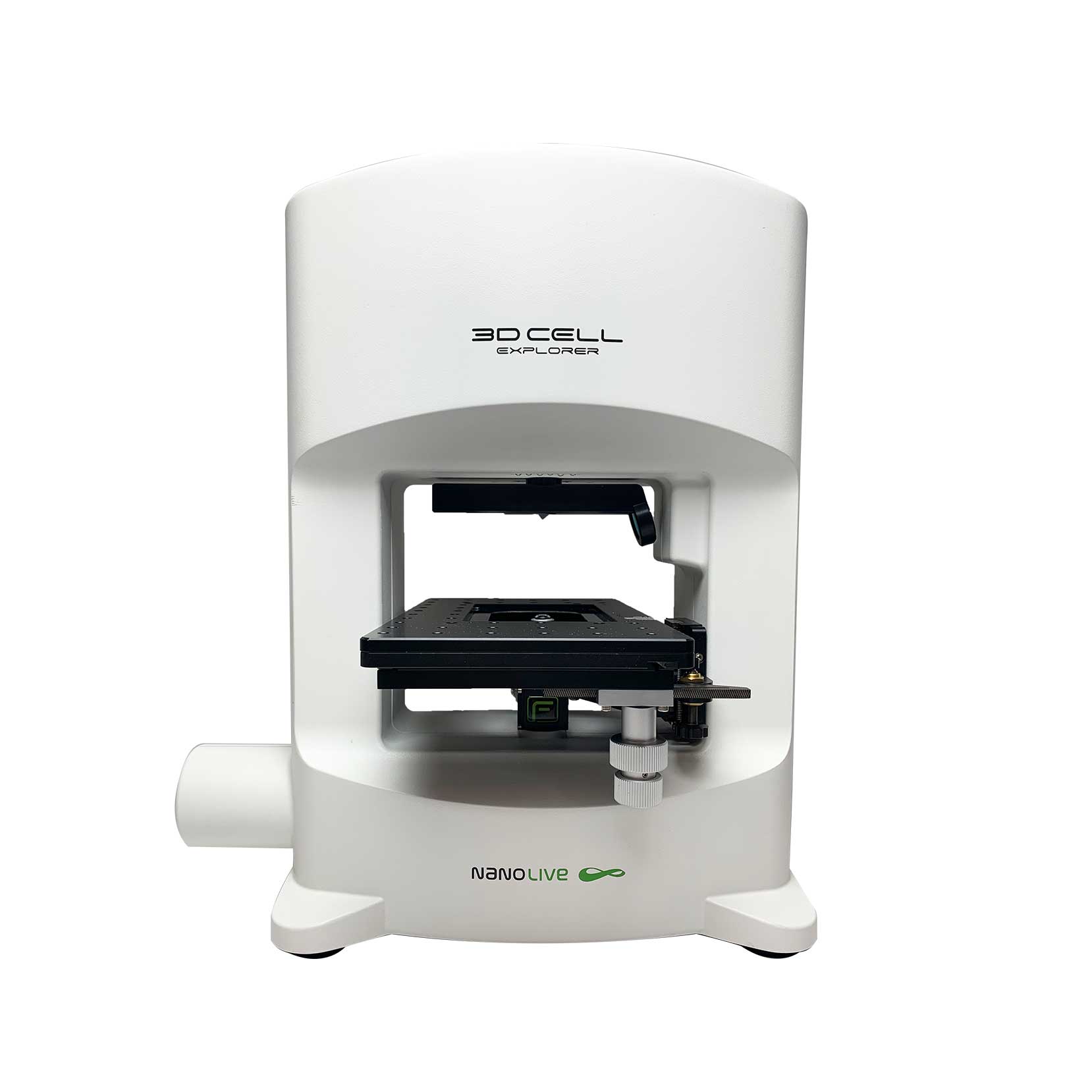
3D CELL EXPLORER-fluo
Multimodal Complete Solution: combine high quality non-invasive 4D live cell imaging with fluorescence
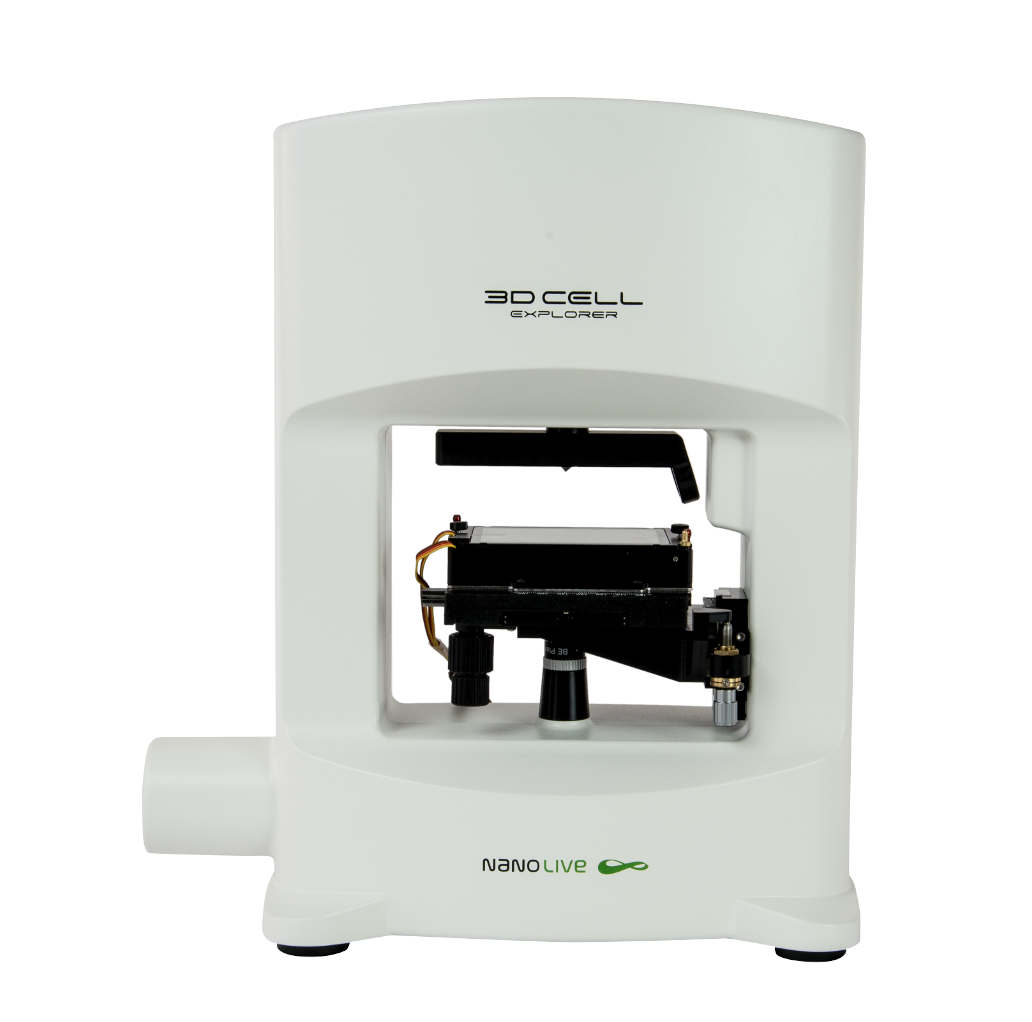
3D CELL EXPLORER
Budget-friendly, easy-to-use, compact solution for high quality non-invasive 4D live cell imaging

